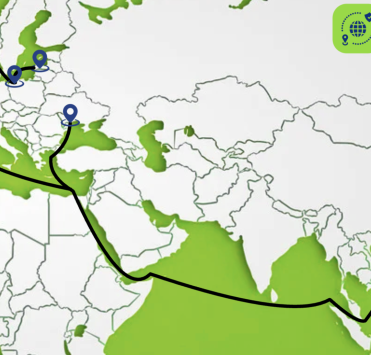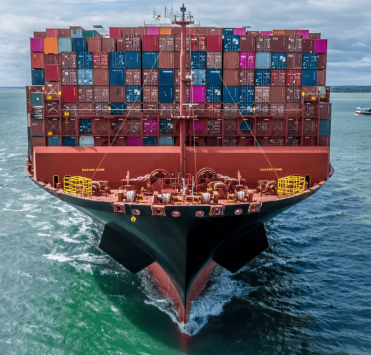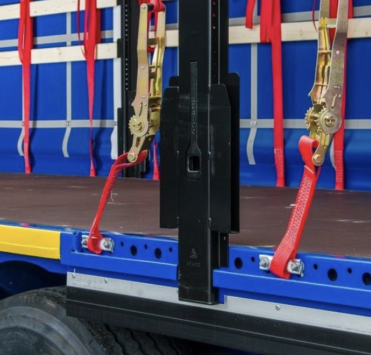What are consolidated shipments and how are they delivered?

Transportation of consolidated cargo is one of the most efficient delivery methods for companies that need to transport small batches of goods. This approach is especially popular in international logistics when deliveries are made from Europe, Asia, or other regions of the world. In this case, you don't need to rent an entire container or truck — you only pay for the space your goods occupy. This saves resources, optimizes logistics, and allows even small businesses to participate in global trade.
What is groupage and how does delivery work?
Groupage (LTL — Less than Truck Load, or LCL — Less than Container Load) is a form of transportation in which a single transport module (truck or container) is used to transport goods from several senders. This way, each customer pays only for the volume or weight of their cargo, which makes this logistics method particularly attractive for small and medium-sized businesses.
The basic principle is consolidation at the warehouse, distribution by route, and joint delivery. For example, when shipping consolidated cargo from China or South Korea, an LCL container is used, which contains various goods from multiple companies. It is important to organize loading correctly, taking into account the compatibility of the cargo, storage conditions, and transportation.
At the consolidation warehouse, cargo is sorted, packaging is checked, and routes are planned. Next comes labeling, document preparation, loading, and dispatch. This process requires strict control and compliance with logistics security standards.
Advantages of consolidated cargo transportation
1. Cost-effectiveness
You only pay for the part of the transport that your cargo occupies. This allows you to avoid overpaying for empty space, especially if the batch size is small. This approach is beneficial for regular but not large shipments.
2. Accessibility of international logistics
Even small companies can export and import goods without renting an entire truck or container. This lowers the threshold for entering international trade.
3. Frequency of flights
Regular truck or container departures allow you to avoid accumulating goods in a warehouse. You can ship your cargo when it is convenient for your business.
4. Flexibility in cargo type
Groupage logistics allows you to transport cargo of various formats: pallets, boxes, bulky items, as well as goods that require special temperature conditions (for example, food or cosmetics).
Stages of consolidated cargo transportation
1. Acceptance and consolidation
In container transportation, cargo from different customers arrives at a consolidation warehouse, which is usually located in the port area. At the warehouse, documents are checked, a visual inspection is carried out, and cargo is sorted by destination. In the case of road transport, the process is simplified: the truck can drive directly to the sender's warehouse and pick up the cargo.
2. Loading
Cargo is loaded into the vehicle according to a pre-determined plan. Special attention is paid to the placement of heavy and fragile items. If necessary, partitions are installed or shock-absorbing elements are used. After loading is complete, the driver secures the cargo with special straps in strict accordance with the instructions, and then takes photos documenting the placement and fastening.
3. Preparation of transit documents
If the delivery route passes through third countries, a package of transit documents is drawn up. The main purpose is to ensure the legal movement of cargo through customs territories without paying customs duties in transit countries. Depending on the route and type of cargo, T1 declarations, TIR carnets, or other documents may be used. The documents are prepared in electronic systems or through a customs broker. After that, the cargo is sealed and receives transit status.
4. Monitoring and control of delivery times
Control over the movement of cargo is organized throughout the entire route. Transport is tracked via GPS, as well as through regular communication with the driver and warehouses. This allows us to quickly respond to possible delays, weather conditions, or changes in the route. The client is provided with up-to-date information on the delivery status.
5. Delivery of cargo to the customs terminal or the recipient's warehouse
Upon arrival in the country of destination, the cargo is sent to the customs terminal for import procedures or, in case of prior clearance, delivered directly to the recipient's warehouse. After unloading and acceptance, the cargo is considered delivered.
Transportation geography and routes
Container transportation of consolidated cargo
For the delivery of consolidated cargo from Asian countries (China, South Korea, Japan, Taiwan), sea transport in the form of consolidated containers (LCL) is used. Most often, containers arrive at the ports of Gdansk or Gdynia.
After unloading at the port, the container is delivered to a deconsolidation warehouse — a logistics center where the following sequence of actions is performed:
- opening the container and unloading pallets according to customer shipments;
- checking accompanying documents and visual inspection of cargo;
- preparation of an export declaration for movement within the EU;
- sealing of the vehicle and transfer of the cargo for further delivery by road to Ukraine.
An alternative route is delivery via the port of Constanta (Romania), from where cargo is also transported to Ukraine by road.
Road transport of consolidated cargo from Europe
For European countries (Germany, Poland, Lithuania, Italy, Czech Republic, France), direct road transport using tented trucks is most often used. Depending on the specifics of the cargo, refrigerated trucks may be used (for example, when transporting food or pharmaceuticals).
To cross the EU and Ukrainian borders, the following export documents are required:
- an export declaration (EX-1) is drawn up;
- if necessary, additional veterinary, phytosanitary, or hazardous permits are obtained;
- the vehicle is sealed;
- the documents are handed over to the driver and the information is registered in the customs control system.
Thus, transit clearance ensures the smooth and legal movement of cargo along an international route to the border with Ukraine or to the terminal of destination.
Container or tilt truck?
Container (LCL)
- Used in maritime logistics from countries far abroad
- Suitable for heavy and compact cargo
- Cost-effective for long distances
- Delivery time: 55 to 70 days
Tilt truck (LTL)
- Suitable for deliveries from EU countries
- More flexible schedule — 2–3 times a week
- Delivery time — 7 to 14 days
- Convenient for delivery to a specific address
Cargo compatibility and precautions
When forming consolidated cargo shipments, special attention is paid to their compatibility. Incorrect placement of different types of goods in the same vehicle can result in damage to the products, loss of marketability, or even dangerous situations on the road. Therefore, adherence to basic safety principles and logistics standards is critical.
Key rules for consolidating cargo:
- Cargo with a strong odor (e.g., chemicals, spices, flavorings) should not be placed near textiles, footwear, paper, cosmetics, or food products — this helps prevent odor absorption and spoilage.
- Dangerous goods (ADR categories) should never be combined with consumer goods, especially food, medicines, and children's products. Separate transport solutions are selected for them in compliance with all safety and labeling requirements.
- Products with temperature requirements (medicines, cosmetics, food products) are transported separately or in special compartments of the vehicle where the required temperature is maintained using thermal containers, refrigerators, or heat-insulating materials.
- Fragile and easily deformable cargo is placed on top and secured in such a way as to prevent pressure from other packages.
A professional compatibility assessment is carried out at the route planning and cargo consolidation stage, which allows us to avoid risks and guarantee the safety of shipments until they are received.
Packaging and labeling
Proper packaging is a key safety factor in the transportation of consolidated cargo. Recommendations:
- Use standard size pallets
- Pack goods in sturdy containers (corrugated cardboard, wood)
- Be sure to seal and wrap with stretch film
- Markings must be legible and moisture resistant
At the consolidation warehouse, packaging quality control and photo documentation are carried out. This is important both for internal logistics and for resolving disputes with the recipient.
Customs clearance
The customs clearance procedure for consolidated cargo requires special attention and experience, as a single shipment may have several senders, different categories of goods, and various import conditions. Despite this, the basic principles correspond to the standard requirements for foreign economic activity.
Key points when clearing consolidated cargo:
- Correctness of shipping documents — each shipment must be accompanied by an accurate set of documents: invoice, packing list, CMR, bill of lading (for sea transport), etc.
- Quantity compliance — the data in the documents must accurately reflect the physical volume and weight of the cargo, otherwise additional customs duties may be charged or the cargo may be stopped at the border.
- Correct determination of HS codes — accurate classification of goods affects the amount of customs duties, the need for licenses, and phytosanitary/veterinary control.
- Timely customs declaration — all documents must be prepared and submitted in advance to avoid delays at the border.
- Verification of permits — quality certificates, certificates of conformity, sanitary and epidemiological conclusions, and other permits must be available and comply with the legislation of the country of import.
Errors at any stage can lead to serious delays and additional costs. Therefore, the registration process must be accompanied by a logistician or customs broker with experience in international transportation and knowledge of the specifics of importing consolidated shipments.









